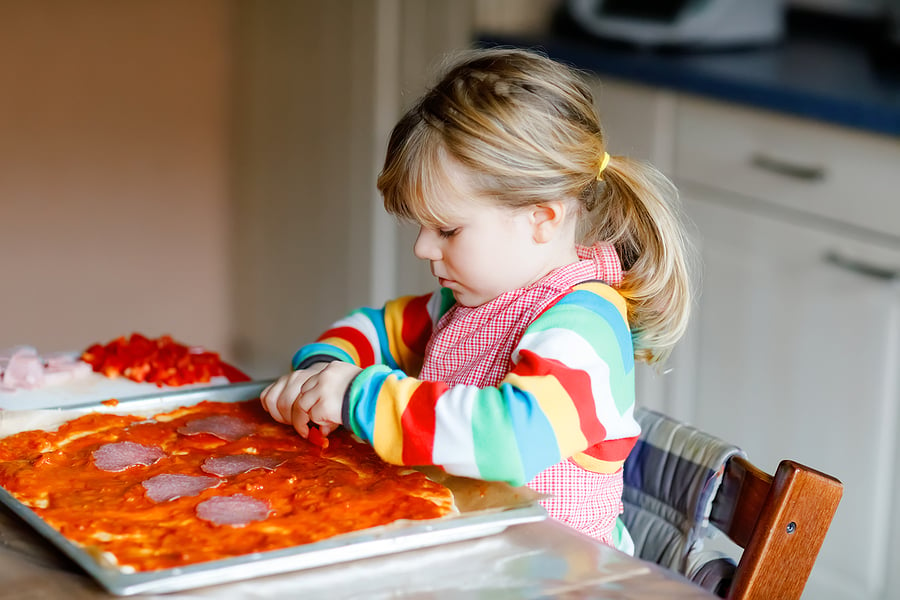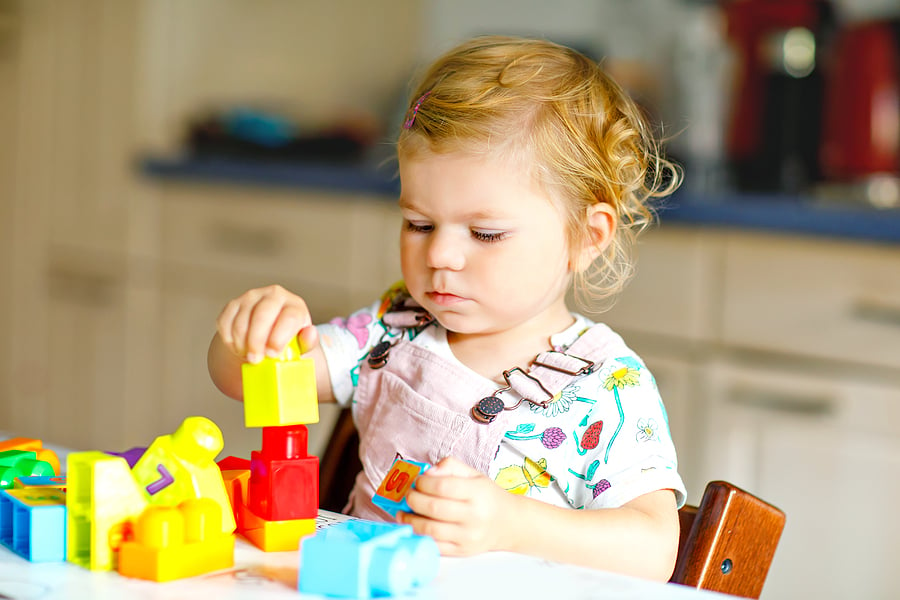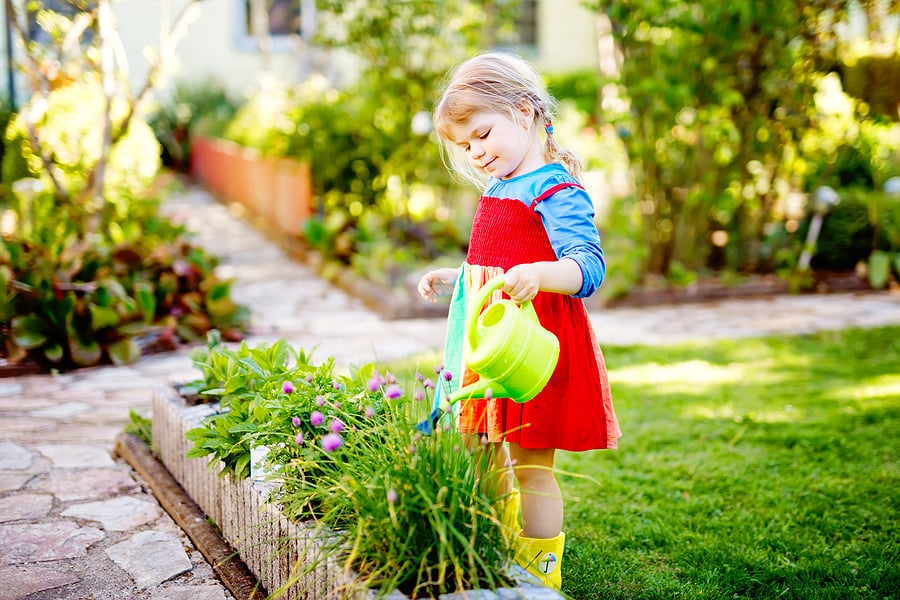Holistic development is crucial during the early childhood years. Here are some holistic development examples and simple activity ideas for parents and teachers.
P.S. This post includes a handy printable of these activities.
What is Holistic Development of a Child?
Holistic development in children is about supporting and growing the whole child, in all their areas of development.
There are five aspects of holistic development – physical, social, emotional, intellectual and spiritual.
The Role of the Teacher or Parent in the Holistic Development of a Child
Holistic development is important, and children need an environment and learning atmosphere that supports it.
The main role of parents and teachers is to ensure the holistic development of a child through free play and guided play activities.
They need to give children opportunities to learn, an engaging learning environment, exposure to educational toys, and freedom to explore and discover.
Good holistic activities often build skills in more than one area. They are play-based, hands-on, creative, interactive and allow children to move.
Activities that are restrictive or sedentary are unlikely to have much impact on a child’s overall growth.
A child watching a screen will learn far less than a child interacting with his environment (although small amounts of screen time are not harmful and can be a much-needed break for caregivers).
33 Holistic Development Examples and Activities
Here are some examples of holistic activities for kids.
They are great for preschoolers and also primary/elementary school children, who still learn a great deal through play. Many are also suitable for toddlers.
1. Cooking
Cooking is a wonderful example of a holistic activity. While helping you prepare food, children build fine motor skills and hand-eye coordination as they chop, peel, wash and slice.

Not only do they learn early maths and science concepts, but they also get to feel proud of their contribution and learn values about helping out at home and working together to make something.
2. Water Play
Playing with water is a therapeutic activity and can also be good for building social skills.
Kids improve their vocabulary and fine motor coordination, learn about capacity and volume as they pour water from cups and learn science by discovering the properties of water.
3. Playing Dress Up
When children play dress-up, they enter a world where they can be anything they want and try to make sense of the world around them. This is an important part of their emotional development.
During all kinds of pretend play children develop language skills, learn new concepts and get to practise tackling moral dilemmas, facing their fears and showing their values – such as when helping a sick patient, disciplining a child or chasing the “baddies”.
4. Singing Songs and Rhymes
Singing songs and nursery rhymes develops children’s auditory perception – an important pre-reading skill.
Action songs, counting songs and fingerplays all build specific skills.
5. Playdough
Playdough is a calming activity that improves attention span and is great for strengthening the finger muscles and building creativity.

6. Picnic
Take kids on a picnic to teach them about preparing food, enjoying nature and spending time together as a family. Let them play chasing games and use the outing to develop gross motor skills.
7. Play with Puppets
Puppet play is wonderful for expressing feelings, learning to communicate and building finger strength. Making your own puppets is creative too.
8. Painting and Drawing
Painting and drawing are the best fine motor activities (and pre-writing activities), and the various stages of drawing show a child’s cognitive understanding of the world.
Therapists use children’s drawings to get clarity on their emotional states as kids express themselves through their drawings.
9. Art Activities
All art activities build creativity and fine motor skills. A few examples are:
- Cutting and pasting activities
- Paper tearing activities
- Collaging with various materials
- Finger painting
- Chalk activities
10. Music Games
Music games such as musical chairs develop an appreciation for music and develop children’s auditory perception and concentration.
11. Carpet Games
Carpet games teach children to work cooperatively, take turns and listen to each other, while building intellectual skills.
12. Construction Play

Construction play is great for improving attention span, fine motor skills, planning and building early engineering skills.
Lego and block play are the most common forms of construction play.
13. Outdoor Games
There are many benefits of outdoor games, including learning about position in space, gross motor development and physical health.
14. Scavenger Hunt
Treasure and scavenger hunts are great for teaching kids to think and decipher clues while moving their bodies at the same time.
15. Sensory Stations
Setting up sensory stations is an effective way to develop kids’ senses, give them a place to get some quiet time and improve fine motor skills too.
16. Playing Shop
Playing shop combines learning about money, organizational skills, creativity and effective communication.
17. Spending Time in Nature
Exploring nature is good for the soul and for overall health. It also encourages physical movement.
18. Movement Activities
Regular movement activities of all kinds are super important for building gross motor skills and multiple other skills.
Play hopscotch, try some jump rope games, play balloon games and hide-and-seek.
19. Listening to Stories
The most crucial early literacy activity is listening to stories. Stories build vocabulary and focus, and teach kids about concepts, relationships, problem solving and much more.
Children also learn the value of books and how to take care of them.
20. Gardening

Gardening teaches kids to be creative, to care for things as they grow, to appreciate nature and to relieve stress in a healthy way. (Here are some simple gardening activities.)
21. Recycling
Involve children in recycling projects or regular recycling at home to teach them about the properties of materials (plastic, paper, biodegradable substances, etc) and how they impact the environment.
22. Playing with Sand
In the sandpit, children learn how to count mud pies, change the consistency of sand by adding water, use their fingers to make many creations and much more.
23. Obstacle Course
An obstacle course is a great way to build specific skills such as balance, strength and coordination and counting.
24. Loose Parts Play
Playing with loose parts can be calming and encourage creativity out of materials you would otherwise never think to use – think bottle tops, pegs, stones, etc.
25. Puzzles

Puzzles are excellent for building visual perception and shape recognition and will help your kids become better readers.
(Get your own set of printable puzzles in my store!)
26. Family Meals
Eating dinner as a family has numerous benefits and is one of the primary ways busy families connect and develop their relationships. It is a place to bond and learn the art of conversation.
27. Playing in the Bath
Playing in the bath is not just fun – it’s also really educational. Kids learn about floating and sinking, the properties of water, how bubbles form and how much liquid their containers can hold.
28. Thinking Games
Play thinking games such as Would You Rather or Odd One Out to get kids developing their critical thinking skills.
Try to ask open-ended questions whenever possible to teach kids to think and reason.
29. Fine Motor Activities
All kinds of fine motor activities such as threading beads, lacing and pushing pegs into pegboards are essential for building fine motor control so children can learn to write.
30. Listening Games
Teach kids to listen, wait their turn and play cooperatively with games such as Simon Says and the Telephone Game.
31. Board Games and Quiet games
Board games and quiet games teach children many intellectual concepts.
Games like matching and sequencing cards teach mental concepts and visual perception.
(Get your own set of printable matching games and sequencing cards here!)
32. Educational Outings
Taking children on educational outings is so meaningful for them. They are likely to remember their trip to the museum to see ancient Egyptian artefacts a lot more than watching a program on the same topic.
33. Community Projects
Getting kids involved in community projects such as donating items to the less fortunate or cleaning up a littered area is a good life skill and has many educational benefits.
These are just a few holistic activities for 3-5-year-olds to get you inspired.
33 Holistic Development Examples and Activities for 3-5 Year Olds
Notes
Holistic development is crucial during the early childhood years. Here are some holistic development examples and simple activity ideas for parents and teachers.
What is Holistic Development of a Child?
Holistic development in children is about supporting and growing the whole child, in all their areas of development.
There are five aspects of holistic development - physical, social, emotional, intellectual and spiritual.
The Role of the Teacher or Parent in the Holistic Development of a Child
Holistic development is important, and children need an environment and learning atmosphere that supports it.
The main role of parents and teachers is to ensure the holistic development of a child through free play and guided play activities.
They need to give children opportunities to learn, an engaging learning environment, exposure to educational toys, and freedom to explore and discover.
Good holistic activities often build skills in more than one area. They are play-based, hands-on, creative, interactive and allow children to move.
Activities that are restrictive or sedentary are unlikely to have much impact on a child’s overall growth.
A child watching a screen will learn far less than a child interacting with his environment (although small amounts of screen time are not harmful and can be a much-needed break for caregivers).
33 Holistic Development Examples and Activities
Here are some examples of holistic activities for kids.
They are great for preschoolers and also primary/elementary school children, who still learn a great deal through play. Many are also suitable for toddlers.
1. Cooking
Cooking is a wonderful example of a holistic activity. While helping you prepare food, children build fine motor skills and hand-eye coordination as they chop, peel, wash and slice.
Not only do they learn early maths and science concepts, but they also get to feel proud of their contribution and learn values about helping out at home and working together to make something.
2. Water Play
Playing with water is a therapeutic activity and can also be good for building social skills.
Kids improve their vocabulary and fine motor coordination, learn about capacity and volume as they pour water from cups and learn science by discovering the properties of water.
3. Playing Dress Up
When children play dress-up, they enter a world where they can be anything they want and try to make sense of the world around them. This is an important part of their emotional development.
During all kinds of pretend play children develop language skills, learn new concepts and get to practise tackling moral dilemmas, facing their fears and showing their values - such as when helping a sick patient, disciplining a child or chasing the “baddies”.
4. Singing Songs and Rhymes
Singing songs and nursery rhymes develops children’s auditory perception - an important pre-reading skill.
Action songs, counting songs and fingerplays all build specific skills.
5. Playdough
Playdough is a calming activity that improves attention span and is great for strengthening the finger muscles and building creativity.
6. Picnic
Take kids on a picnic to teach them about preparing food, enjoying nature and spending time together as a family. Let them play chasing games and use the outing to develop gross motor skills.
7. Play with Puppets
Puppet play is wonderful for expressing feelings, learning to communicate and building finger strength. Making your own puppets is creative too.
8. Painting and Drawing
Painting and drawing are the best fine motor activities (and pre-writing activities), and the various stages of drawing show a child’s cognitive understanding of the world.
Therapists use children’s drawings to get clarity on their emotional states as kids express themselves through their drawings.
9. Art Activities
All art activities build creativity and fine motor skills. A few examples are:
- Cutting and pasting activities
- Paper tearing activities
- Collaging with various materials
- Finger painting
- Chalk activities
10. Music Games
Music games such as musical chairs develop an appreciation for music and develop children’s auditory perception and concentration.
11. Carpet Games
Carpet games teach children to work cooperatively, take turns and listen to each other, while building intellectual skills.
12. Construction Play
Construction play is great for improving attention span, fine motor skills, planning and building early engineering skills.
Lego and block play are the most common forms of construction play.
13. Outdoor Games
There are many benefits of outdoor games, including learning about position in space, gross motor development and physical health.
14. Scavenger Hunt
Treasure and scavenger hunts are great for teaching kids to think and decipher clues while moving their bodies at the same time.
15. Sensory Stations
Setting up sensory stations is an effective way to develop kids’ senses, give them a place to get some quiet time and improve fine motor skills too.
16. Playing Shop
Playing shop combines learning about money, organizational skills, creativity and effective communication.
17. Spending Time in Nature
Exploring nature is good for the soul and for overall health. It also encourages physical movement.
18. Movement Activities
Regular movement activities of all kinds are super important for building gross motor skills and multiple other skills.
Play hopscotch, try some jump rope games, play balloon games and hide-and-seek.
19. Listening to Stories
The most crucial early literacy activity is listening to stories. Stories build vocabulary and focus, and teach kids about concepts, relationships, problem solving and much more.
Children also learn the value of books and how to take care of them.
20. Gardening
Gardening teaches kids to be creative, to care for things as they grow, to appreciate nature and to relieve stress in a healthy way. (Here are some simple gardening activities.)
21. Recycling
Involve children in recycling projects or regular recycling at home to teach them about the properties of materials (plastic, paper, biodegradable substances, etc) and how they impact the environment.
22. Playing with Sand
In the sandpit, children learn how to count mud pies, change the consistency of sand by adding water, use their fingers to make many creations and much more.
23. Obstacle Course
An obstacle course is a great way to build specific skills such as balance, strength and coordination and counting.
24. Loose Parts Play
Playing with loose parts can be calming and encourage creativity out of materials you would otherwise never think to use - think bottle tops, pegs, stones, etc.
25. Puzzles
Puzzles are excellent for building visual perception and shape recognition and will help your kids become better readers.
26. Family Meals
Eating dinner as a family has numerous benefits and is one of the primary ways busy families connect and develop their relationships. It is a place to bond and learn the art of conversation.
27. Playing in the Bath
Playing in the bath is not just fun - it’s also really educational. Kids learn about floating and sinking, the properties of water, how bubbles form and how much liquid their containers can hold.
28. Thinking Games
Play thinking games such as Would You Rather or Odd One Out to get kids developing their critical thinking skills.
Try to ask open-ended questions whenever possible to teach kids to think and reason.
29. Fine Motor Activities
All kinds of fine motor activities such as threading beads, lacing and pushing pegs into pegboards are essential for building fine motor control so children can learn to write.
30. Listening Games
Teach kids to listen, wait their turn and play cooperatively with games such as Simon Says and the Telephone Game.
31. Board Games and Quiet Games
Board games and quiet games teach children many intellectual concepts.
Games like matching and sequencing cards teach mental concepts and visual perception.
(Get your own set of printable matching games and sequencing cards here!)
32. Educational Outings
Taking children on educational outings is so meaningful for them. They are likely to remember their trip to the museum to see ancient Egyptian artefacts a lot more than watching a program on the same topic.
33. Community Projects
Getting kids involved in community projects such as donating items to the less fortunate or cleaning up a littered area is a good life skill and has many educational benefits.
These are just a few holistic activities for 3-5-year-olds to get you inspired.


Naledi
Saturday 13th of April 2024
Thank you for this great information
Tanja McIlroy
Sunday 14th of April 2024
You're welcome!
Refilwe
Monday 12th of June 2023
The best i found the information i needed for my assignment. I love it
Tanja Mcilroy
Wednesday 14th of June 2023
I'm glad this was helpful, Refilwe!
Jenita
Monday 21st of November 2022
I really love this!
Tanja Mcilroy
Monday 21st of November 2022
Thanks, Jenita!
Maria
Friday 7th of October 2022
One of the best to learn more I love it
Tanja Mcilroy
Monday 10th of October 2022
Thanks for reading!
John Epak
Monday 11th of April 2022
One-off the best site
Tanja Mcilroy
Tuesday 12th of April 2022
Thank you, John!